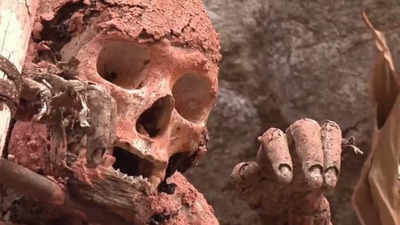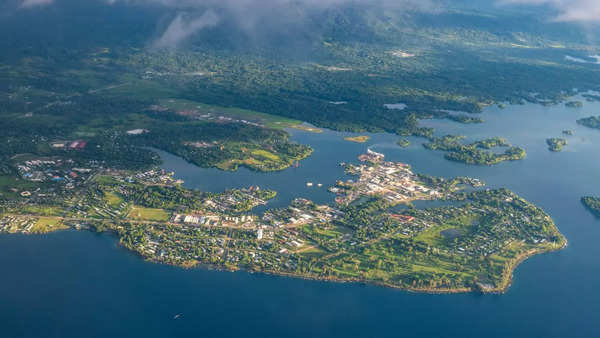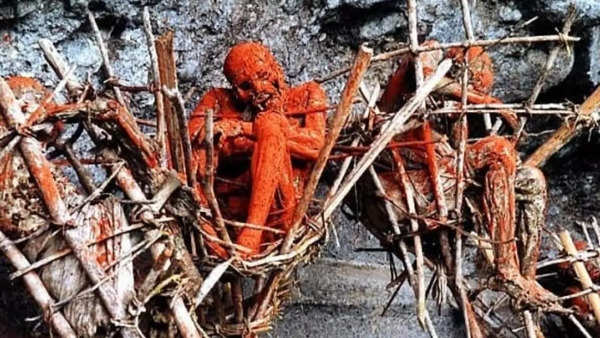
In Papua New Guinea‘s remote Aseki District, the Anga tribe lives in harmony with the wilderness, completely detached from the modern world. For them, even a change in the wind or the passing mist is seen as an omen. Yet, this is far from the most unusual practice the tribe observes. The Anga people mummify their dead ancestors.
To an outsider, this practice might seem inhumane, but for the tribe of about 45,000 people, it is a way to stay connected with their ancestors.The process of mummification that the Anga people follow is far different from what happened in ancient Egypt, where the body was dismantled from the inside, organs were removed, and then the body was wrapped in a form of cloth. Rather, the dead of Anga are mummified sitting up, and their body is subjected to three months of smoking over a heavily lit fire.

The entire process is highly codified, with no room for mistakes, as it could invite ill-omen. The body of the dead is made to float over fire, and as it bloats, the mummifiers, or people responsible for preparing the body, poke the body with sticks to drain its fluids and then use a wooden stick to widen the anus to allow all the organs out of the body. Meanwhile, no part of the body can touch the ground. They then coat the bodies with red clay to preserve their structure and place them in shrines deep within the jungle. This whole process takes three months, and during this time, the mummifiers are not allowed to leave the place, wash themselves, or eat anything outside of a prescribed diet.

Image Credit: Instagram/@paradox_archives00
While modern humans preserve the face by capturing it through their lenses, the Anga people do so by ensuring that the face of the dead remains intact during the mummification process. They believe that the souls of their ancestors roam during the day and return to their bodies at night. Without their faces, however, they would not be able to recognize their body and would end up roaming the Earth eternally. As the final stage of the process, the tribe carries the body, strapped to a chair, to a rock cliff overlooking the village. The mummified body is placed next to other mummified bodies so that they can join the forces of the ancestors and protect the tribe from any ill-luck.
However, this practice of mummification was not exclusive to just the Anga Tribe. According to historians, the preservation of the dead was widespread in Papua New Guinea and other South Pacific islands, most prominent in the 19th and early 20th centuries. But as colonizers invaded the lands, the practice was banned or stigmatized, citing reasons of hygiene and humanity.


